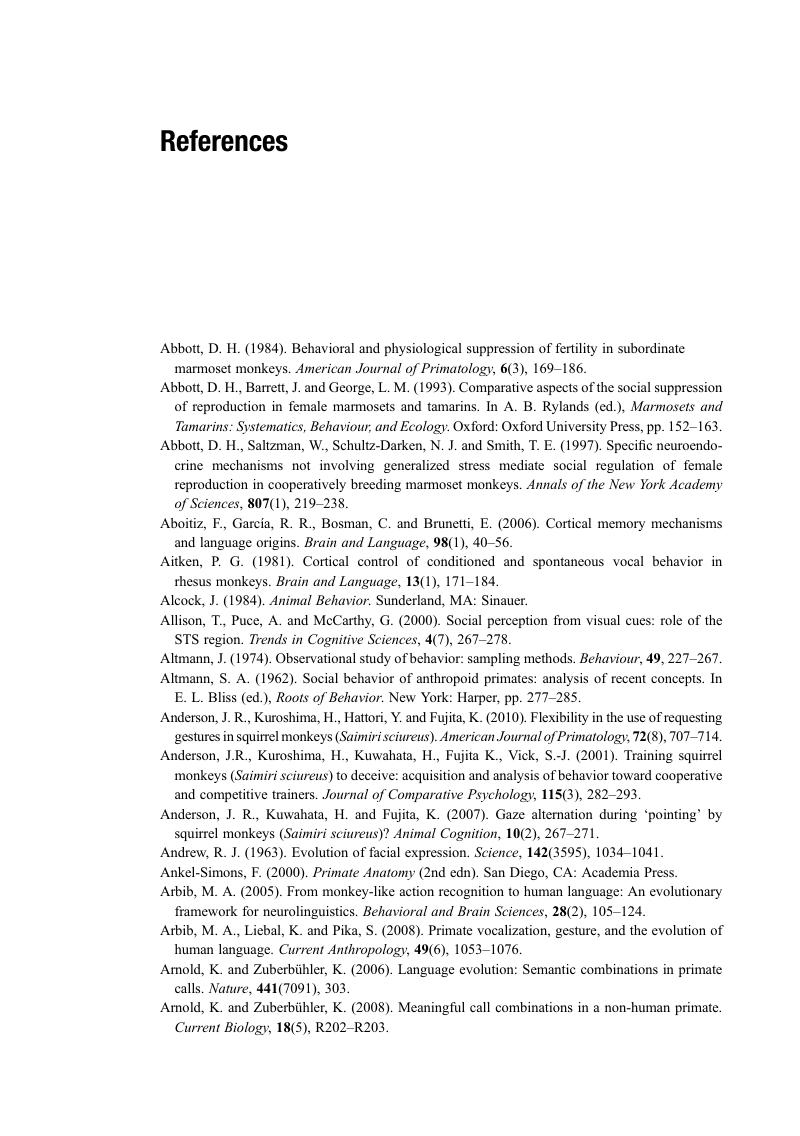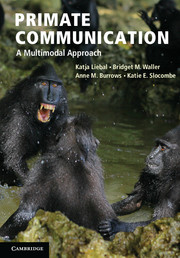Book contents
- Frontmatter
- Contents
- Preface
- Acknowledgements
- Part I Introduction to primate communication
- Part II Approaches to primate communication
- Part III Cognitive characteristics of primate communication
- Part IV Approaches to the evolution of primate communication
- Glossary
- References
- Species index
- Subject index
- References
References
Published online by Cambridge University Press: 05 December 2013
- Frontmatter
- Contents
- Preface
- Acknowledgements
- Part I Introduction to primate communication
- Part II Approaches to primate communication
- Part III Cognitive characteristics of primate communication
- Part IV Approaches to the evolution of primate communication
- Glossary
- References
- Species index
- Subject index
- References
Summary

- Type
- Chapter
- Information
- Primate CommunicationA Multimodal Approach, pp. 238 - 280Publisher: Cambridge University PressPrint publication year: 2013



